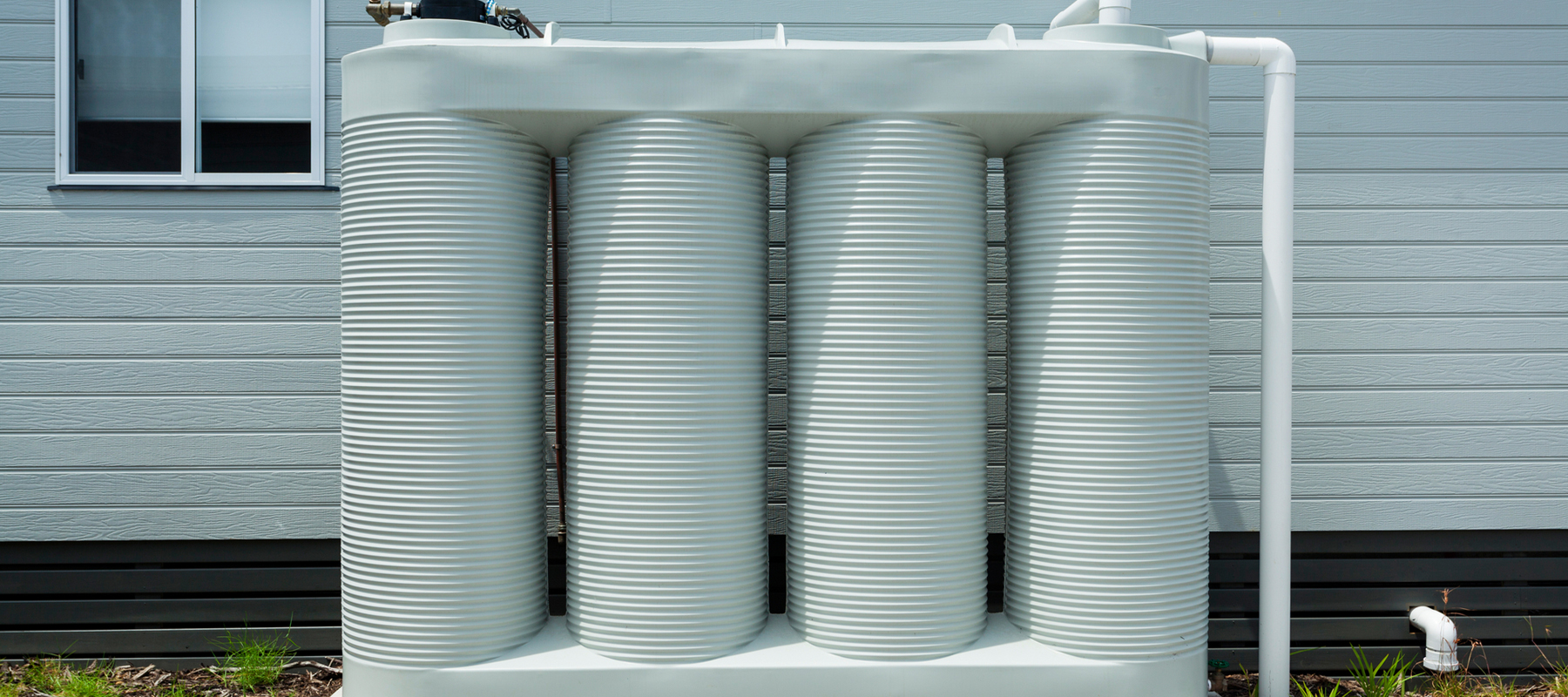Water Tank Installation 101: Costs, Process, Types and Tips
Last Updated: November 13, 2023

Fact Checked By: Ryan Maguire
On This Page
Water tanks date back to the beginning of civilization and the need to store water has hardly declined over the years. Modern water tanks made from steel, fiberglass, polyethylene, and other materials can be placed either above ground or below ground and used for a variety of purposes. Continue reading this buying guide to learn more about what a water tank can be used for in addition to water tank installation costs.
Water Tank Installation Cost #
Installing a residential water tank is a project that typically costs $1,500 to $4,000 on average. Here are some of the main costs for a water tank installation:
Water storage tank: The tank itself ranges from $500 - $2,000 depending on the capacity, material (polyethylene, steel, concrete), and tank quality. A 500-1000 gallon tank is typical for homes.
Excavation: For underground tanks, excavating the hole costs around $600 - $1,800. The size and depth impact digging costs.
Foundation: Building a concrete base runs $500 - $1,500 depending on tank size and local labor rates.
Delivery: Having the tank delivered to your home costs $100 - $500 or more based on tank size, drop-off fees, and fuel surcharges.
Installation labor: With a certified installer, expect to pay $400 - $1,200 for tank placement, setup, and connections.
Permits: Securing required permits from the local municipality averages $50 - $200+.
Total installation costs vary based on tank size, location complexity, labor rates, and your water supply setup. But most standard home installations fall within the $1,500 to $4,000 typical range.
Water Tank Installation Real Life Cost Examples #
I had a 750 gallon polyethylene tank installed underground in my backyard in New Jersey. The tank was $950, digging the hole and setting the foundation was $850, and the plumber charged $650 to hook up the pipes, fittings, and valves. Permit was $75. Total was $2,525.
For our Colorado cabin, I needed a gravity fed system so I had a 500 gallon tank installed on a hill near the house. The stainless steel tank was $1,200. I rented an excavator to dig out the site and create a gravel bed which cost $500 for the weekend. The plumber charged $350 to get it connected to the gutters and cabin pipes. Total cost was $2,050.
I had a concrete 1500 gallon tank installed above ground at my Virginia farmhouse. The tank itself was $1,800 with delivery fees. The foundation and site prep cost $900. Installer charged $450 to get it leveled, secured and piped up to the house's water lines. Grand total came to $3,150 for the whole project.
For my homestead in Oregon I needed a large 3000 gallon tank. I found a used poly tank for $800 but it needed cleaning. Excavator rental was $750 to dig the hole. Installing and connecting it cost $550 in labor. Grand total for the used system was around $2,100.
Types of Water Tanks #
Polyethylene tanks - Made of plastic polyethylene material. Most common choice. Inexpensive, lightweight.
Steel tanks - Made of steel material. More durable but heavy. Often used for very large tanks.
Concrete tanks - Made of concrete reinforced with steel. Heavyweight but very durable.
Wood tanks - Made of wood sealed with epoxy or other coating. Not common for potable water.
Fiberglass tanks - Made from fiberglass material. Strong but can be expensive. Often used underground.
Metal cisterns - Historically made from materials like copper or galvanized steel. Not as common today.
Plastic tanks - Made from materials like PVC plastic. Generally only used for non-potable rainwater collection.
Bladder tanks - Flexible rubber bladder tanks. Used for systems needing variable capacity.
Key factors in choosing a tank type are structural strength, durability, food-safety for potable water, weight, cost, site placement, and required capacity. Polyethylene is the most common residential potable water tank material.
Key Water Tank Installation Considerations #
Hire a licensed plumber or certified installer to ensure proper setup and connections.
Determine the tank location based on site layout, ground type, burial depths, and water supply access.
Choose the tank capacity carefully based on intended water usage, household size, and supply rates.
Consider an underground tank for colder climates to prevent freezing. Above ground is fine for warmer regions.
Installation may involve electrical work for pumps and require an electrician.
A foundation is typically required to properly level and support the tank weight.
Building permits are usually required and local codes apply to water tank installations.
Disinfection of the tank after installation is critical to ensure water safety before use.
Ongoing maintenance involves checking for leaks, sediment buildup, pump operation, and refilling additives.
Consider a water treatment system if water quality will be an issue from the source.
Professional help is recommended over DIY for proper siting, configuration, and installation.
Doing appropriate planning for the tank system and getting qualified help will ensure long-term reliability and functionality.
